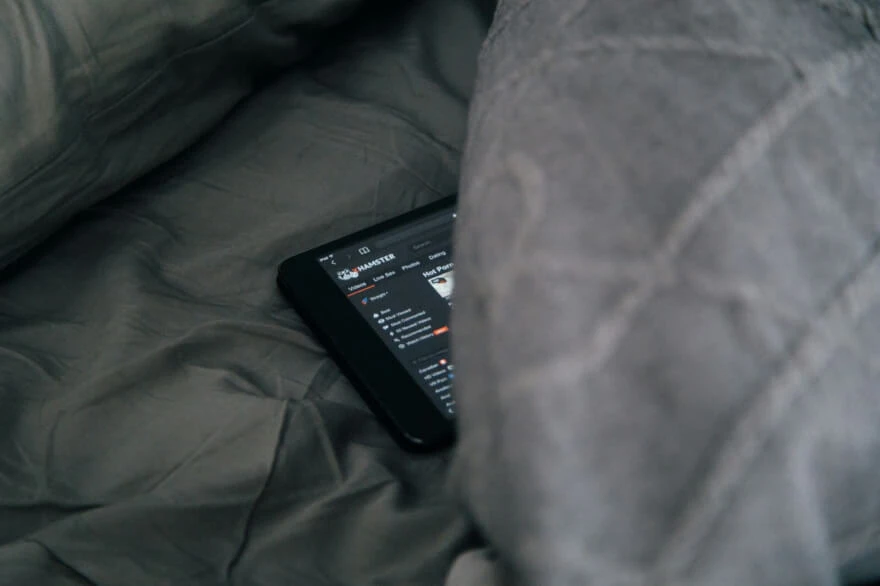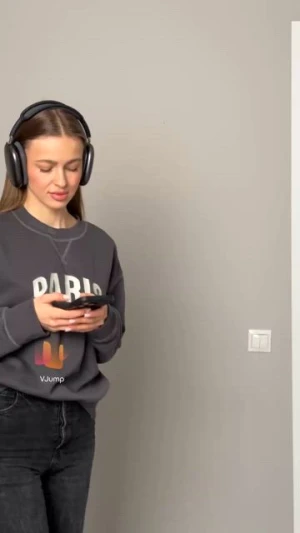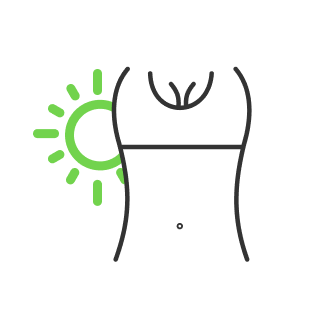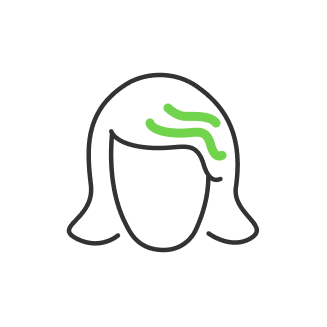Top 12 NSFW AI Tools to Ignite Your Creative Imagination

- Understanding NSFW AI Generators
- 1. DeepNude
- Features
- Use Cases
- Ethical Considerations
- 2. Artbreeder
- Features
- Use Cases
- Community and Collaboration
- 3. This Person Does Not Exist
- Features
- Use Cases
- Integration with Other Tools
- 4. Waifu Labs
- Features
- Use Cases
- Expanding Creative Horizons
- 5. AI Dungeon
- Features
- Use Cases
- Narrative Flexibility
- 6. DeepDream Generator
- Features
- Use Cases
- Exploring New Dimensions
- 7. Runway ML
- Features
- Use Cases
- Versatility and Adaptability
- 8. GANPaint Studio
- Features
- Use Cases
- Detailed Manipulation
- 9. BigGAN
- Features
- Use Cases
- Advanced Capabilities
- 10. Stable Diffusion
- Features
- Use Cases
- Reliable Performance
- 11. Nudify
- Features
- Use Cases
- Ethical Considerations
- 12. AnimeGAN
- Features
- Use Cases
- Anime Aesthetics
- Choosing the Best NSFW AI Generator
- Ethical Considerations in Using NSFW AI Generators
- Final Thoughts
The rapid advancement of AI technology has transformed many creative fields, including the creation of NSFW (Not Safe For Work) content. AI-driven tools now allow users to generate a wide variety of explicit images, art, and photos with incredible ease and precision. In this extensive guide, we will explore the best NSFW AI generators available today, delving into their features, capabilities, and what sets them apart.
Whether you're a creator looking for new ways to express your art or simply curious about the latest in AI technology, these NSFW AI generators are worth exploring. If you're interested in the underlying technology, check out our comprehensive guide on how art generators work.

Understanding NSFW AI Generators
Before diving into the specific tools, it's important to understand what NSFW AI generators are and how they work. These AI-driven tools utilize advanced machine learning algorithms to create images and art that are considered adult or explicit in nature. By training on extensive datasets of images, these AI models learn to generate content that mimics the style and quality of real photos or illustrations.
Now, let's explore the best NSFW AI art generators that you should consider trying.

1. DeepNude
DeepNude is one of the most well-known NSFW AI photo generators. It gained notoriety for its ability to create realistic nude images of women from fully clothed photos. While it faced significant controversy and was eventually taken offline, its technology set a precedent for future AI NSFW tools.
Features
- Image Transformation: Converts clothed images into nude versions.
- Realistic Details: High attention to detail and realism in the generated images.
- User-Friendly Interface: Simple and intuitive interface for ease of use.
Use Cases
- Artistic Projects: Useful for artists seeking realistic anatomical references.
- Adult Content Creation: Popular among creators of adult content for its realistic outputs.
Ethical Considerations
Given its capabilities, DeepNude's ethical implications cannot be overlooked. The potential for misuse, such as creating non-consensual explicit images, raises serious concerns about privacy and consent.

2. Artbreeder
Artbreeder is an AI art NSFW generator that allows users to create and modify images using genetic algorithms. While not specifically designed for NSFW content, it can be used to create explicit art by manipulating existing images.
Features
- Image Blending: Combines multiple images to create unique results.
- Style Customization: Allows users to adjust various parameters to achieve the desired style.
- Community Sharing: Users can share their creations and explore others’ work.
Use Cases
- Creative Exploration: Ideal for exploring different artistic styles and concepts.
- NSFW Art Creation: Can be used to generate and refine NSFW art with unique styles.
Community and Collaboration
Artbreeder's community aspect is one of its strongest features. Users can collaborate, share, and learn from each other, enhancing the creative process and fostering a supportive environment for NSFW artists.

3. This Person Does Not Exist
This Person Does Not Exist is an AI-powered tool that generates realistic human faces. While it focuses on creating non-NSFW images, it can be a valuable resource for creators needing realistic human references for their NSFW AI art generator projects.
Features
- High Realism: Generates lifelike human faces.
- Instant Generation: Produces new faces with each refresh.
- Diverse Outputs: Offers a wide range of faces in different styles.
Use Cases
- Character Design: Useful for creating realistic characters for NSFW art.
- Reference Material: Provides detailed facial references for artists.
Integration with Other Tools
This Person Does Not Exist can be integrated with other image and art generators to create comprehensive NSFW projects, combining realistic human faces with AI-generated bodies or backgrounds.

4. Waifu Labs
Waifu Labs is an AI NSFW image generator designed to create anime-style characters. While it primarily focuses on SFW (Safe For Work) content, it can be used to generate NSFW anime characters with the right modifications.
Features
- Anime Style: Specializes in creating characters in the anime style.
- Customization Options: Users can adjust various attributes such as hairstyle, eye color, and clothing.
- Rapid Generation: Quickly produces new characters with each iteration.
Use Cases
- Anime Art: Ideal for creating NSFW anime art and characters.
- Art Projects: Useful for artists seeking inspiration or character designs.
Expanding Creative Horizons
Waifu Labs enables users to explore different aspects of anime art, providing a robust platform for both novice and experienced artists to experiment with NSFW content in the anime style.

5. AI Dungeon
AI Dungeon is an AI-powered text-based adventure game that allows users to create and explore stories, including NSFW scenarios. It uses natural language processing to generate text based on user input.
Features
- Interactive Storytelling: Users can create and interact with custom stories.
- Custom Scenarios: Supports the creation of NSFW scenarios.
- Text-Based Generation: Focuses on generating detailed textual descriptions.
Use Cases
- Story Creation: Ideal for creating NSFW narratives and scenarios.
- Creative Writing: Useful for writers exploring adult themes.
Narrative Flexibility
AI Dungeon provides unparalleled flexibility in storytelling, allowing users to craft intricate NSFW narratives that can evolve based on their choices and interactions.
6. DeepDream Generator
DeepDream Generator uses neural networks to create dream-like images. While it is not explicitly an NSFW AI generator, it can be used to create surreal and abstract NSFW art.
Features
- Dream-Like Images: Produces surreal and abstract images.
- Style Transfer: Allows users to apply different styles to their images.
- Artistic Exploration: Encourages creativity and experimentation.
Use Cases
- Surreal Art: Ideal for creating unique and abstract NSFW art.
- Artistic Projects: Useful for exploring different artistic styles and techniques.
Exploring New Dimensions
DeepDream Generator offers artists the ability to transcend traditional boundaries, creating NSFW art that is both imaginative and otherworldly.

7. Runway ML
Runway ML is a platform that provides a variety of AI tools for creators, including NSFW AI image generators. It offers pre-trained models and an easy-to-use interface for generating NSFW content.
Features
- Variety of Models: Offers multiple AI models for different creative tasks.
- User-Friendly Interface: Simplifies the process of generating AI art.
- Customizable Outputs: Allows users to adjust parameters to achieve desired results.
Use Cases
- NSFW Art Creation: Ideal for generating a wide range of NSFW art.
- Creative Projects: Useful for experimenting with different AI models and techniques.
Versatility and Adaptability
Runway ML's diverse range of models and tools makes it a versatile platform for creators looking to explore various aspects of NSFW art generation.
8. GANPaint Studio
GANPaint Studio is an interactive tool that uses GANs (Generative Adversarial Networks) to create and modify images. It can be used as an AI image generator NSFW by manipulating various aspects of the image.
Features
- Interactive Editing: Allows users to add or remove elements from images.
- High-Quality Outputs: Generates high-resolution images with detailed features.
- Customizable Controls: Provides tools for fine-tuning the generated images.
Use Cases
- Image Editing: Ideal for creating and modifying NSFW images.
- Artistic Projects: Useful for artists seeking detailed control over their work.
Detailed Manipulation
GANPaint Studio's interactive editing features enable users to precisely control the elements within their NSFW images, ensuring high-quality and customized results.
9. BigGAN
BigGAN is a state-of-the-art AI model known for generating high-quality images. While it is not specifically designed for NSFW content, it can be trained on NSFW datasets to produce explicit images.
Features
- High Quality: Generates high-resolution and detailed images.
- Scalability: Capable of generating images in various styles and resolutions.
- Custom Training: Can be trained on specific datasets to produce desired outputs.
Use Cases
- NSFW Image Generation: Ideal for creating high-quality NSFW images.
- Artistic Exploration: Useful for experimenting with different styles and techniques.
Advanced Capabilities
BigGAN's advanced capabilities and flexibility make it a powerful tool for creators looking to push the boundaries of NSFW image generation.

10. Stable Diffusion
Stable Diffusion is another powerful AI NSFW generator that can produce highly detailed and creative images. It is particularly noted for its stability and consistency in generating images.
Features
- Consistency: Produces stable and reliable results.
- Detail-Oriented: Generates images with high levels of detail.
- Flexible Outputs: Capable of creating a wide range of styles and subjects.
Use Cases
- NSFW Art Creation: Ideal for generating consistent and detailed NSFW art.
- Creative Projects: Useful for artists seeking reliable and high-quality outputs.
Reliable Performance
Stable Diffusion's emphasis on stability and consistency ensures that users can rely on it for producing high-quality NSFW art without frequent errors or inconsistencies.
11. Nudify
Nudify is an AI tool specifically designed to create nude versions of clothed images. It uses advanced algorithms to generate realistic nude images, making it a powerful tool for NSFW content creation.
Features
- Image Transformation: Converts clothed images into nude versions.
- Realistic Outputs: Produces high-quality and realistic nude images.
- User-Friendly Interface: Simple and intuitive for ease of use.
Use Cases
- NSFW Image Creation: Ideal for generating realistic nude images from clothed photos.
- Artistic Projects: Useful for artists seeking realistic anatomical references.
Ethical Considerations
Nudify, like DeepNude, comes with significant ethical considerations regarding privacy and consent. Responsible use and respect for individuals' rights are paramount. If you're looking for a tool to modify images more safely and responsibly, you might also be interested in our post on remove clothes in an online photo editor.

12. AnimeGAN
AnimeGAN is an AI tool specifically designed to transform photos into anime-style images. It can be used to create NSFW anime art by applying anime-style transformations to explicit photos.
Features
- Photo to Anime: Converts photos into anime-style images.
- Customization: Offers various parameters for adjusting the anime style.
- High Quality: Produces detailed and high-quality anime-style outputs.
Use Cases
- NSFW Anime Art: Ideal for generating NSFW anime-style images.
- Artistic Projects: Useful for exploring different anime styles and techniques.
Anime Aesthetics
AnimeGAN brings the distinct and popular anime aesthetic to NSFW art creation, providing a unique and stylistic option for artists.

Choosing the Best NSFW AI Generator
When selecting the best NSFW AI generator for your needs, consider the following factors:
- Purpose: Determine whether you need the tool for creating realistic images, artistic projects, or interactive storytelling.
- Features: Look for features that align with your creative goals, such as customization options, style transfer, or interactive editing.
- Ease of Use: Choose a tool with an intuitive interface that matches your skill level.
- Quality: Consider the quality and realism of the generated images.
- Community: Explore tools with active communities for inspiration and support.
Ethical Considerations in Using NSFW AI Generators
While NSFW AI generators offer powerful tools for creative expression, it is crucial to consider the ethical implications of their use:
- Consent: Always ensure that the creation and sharing of NSFW content respect the privacy and consent of all individuals involved.
- Legal Compliance: Adhere to local and international laws regarding the creation, distribution, and consumption of explicit content.
- Responsible Use: Avoid using these tools to create non-consensual or harmful content, and be mindful of the potential impact on individuals and communities.

Final Thoughts
NSFW AI generators offer a fascinating glimpse into the future of digital art and content creation.
With their advanced algorithms and user-friendly interfaces, these tools provide endless possibilities for creators to explore and express their creativity. Whether you’re an artist, writer, or simply curious about AI technology, the tools discussed in this blog post are worth trying.
Remember to use these tools responsibly and ethically, respecting the boundaries of consent and privacy.
The power of AI is immense, and with it comes the responsibility to create and share content that respects the rights and dignity of all individuals.
In summary, the world of NSFW AI generators is vast and full of potential. From transforming images with DeepNude to creating anime characters with Waifu Labs, these tools offer something for everyone. So go ahead, explore these generators, and unleash your creativity in the NSFW art space.
Co-founder of RetouchMe. In addition to business, he is passionate about travel photography and videography. His photos can be viewed on Instagram (over 1 million followers), and his films can be found on his YouTube channel.
Moreover, his profile is featured on the most popular and authoritative resource in the film industry — IMDb. He has received 51 international awards and 18 nominations at film festivals worldwide.

with RetouchMe













